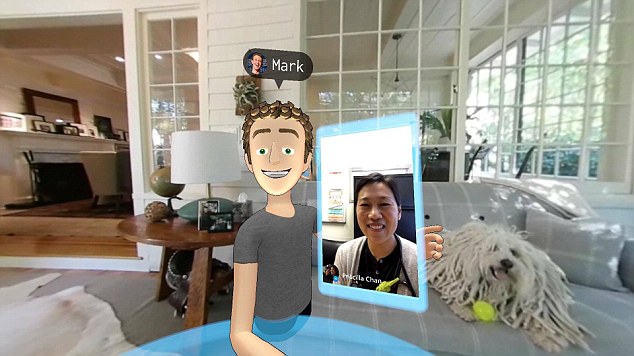6 October Facebook founder Mark Zuckerburg talked about the future of virtual reality at Facebook. During his talk, Mark announced that the Oculus Rift will be available for less money, that Oculus Touch, the motion controllers to control the virtual reality will be available soon and finally, that it will build a headset which is no longer connected to a computer or mobile phone. Besides these announcements, there was another announcement which should not be neglected.
FB announced VR Social
Besides training-, healthcare- and entertainment functionalities of virtual reality, FB showed an experiment in which the created an environment in virtual reality where people can create avatars with facial expression in combination with hand motion steered by the Oculus Touch.
This new virtual reality social environment allows people to be together with their friends. In this new social virtual environment has multiple functions:
- Use ‘real life’ images to create your own virtual room;
- In this room you and your friends can visit, play games, watch movies or videos and much more;
- Make phone calls with your avatar through Facebook Messenger;
- And finally: take VR selfies with your friends.
An example of a selfie in the VR environment while videocalling through Facebook Messenger:

(Source: https://www.facebook.com/zuck)
Being the first in the market with a good VR has a big advantage for Facebook. By creating a VR environment first, it tries gain first mover advantages and be the de facto standard in the future. Facebook is heavily integrated, by watching online videos, or online video chatting (linked to Facebook Messenger). This way, Facebook can integrate advertisements in their new environment which would lead to additional income.
However, Booth, Facebook Social VR Product Manager, stated that the core of the Facebook social VR experience should focus on social interaction and sharing, rather than gaming (Roadtovr, 2016). It seems that with all the development of Facebook in a virtual reality environment, the company does not want to miss the boat on the newest technologies, like they did before on the smartphones.
Source:
Roadtovr. (2016). Facebook Plans to Launch Social VR App “As Soon As Possible.” Retrieved October 20, 2016, from http://www.roadtovr.com/facebook-plans-to-launch-social-vr-offering-as-soon-as-possible/
https://www.facebook.com/zuck


